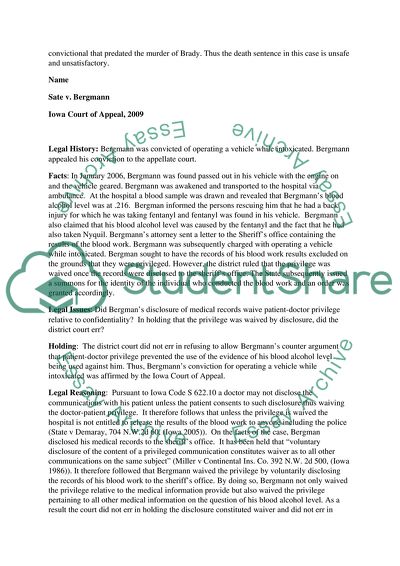Cite this document
(Analysis of St. Clair v. Commonwealth, Sate v. Bergmann, and Osbourne Case Study Example | Topics and Well Written Essays - 1000 words, n.d.)
Analysis of St. Clair v. Commonwealth, Sate v. Bergmann, and Osbourne Case Study Example | Topics and Well Written Essays - 1000 words. https://studentshare.org/law/1771364-brief-a-case
Analysis of St. Clair v. Commonwealth, Sate v. Bergmann, and Osbourne Case Study Example | Topics and Well Written Essays - 1000 words. https://studentshare.org/law/1771364-brief-a-case
(Analysis of St. Clair V. Commonwealth, Sate V. Bergmann, and Osbourne Case Study Example | Topics and Well Written Essays - 1000 Words)
Analysis of St. Clair V. Commonwealth, Sate V. Bergmann, and Osbourne Case Study Example | Topics and Well Written Essays - 1000 Words. https://studentshare.org/law/1771364-brief-a-case.
Analysis of St. Clair V. Commonwealth, Sate V. Bergmann, and Osbourne Case Study Example | Topics and Well Written Essays - 1000 Words. https://studentshare.org/law/1771364-brief-a-case.
“Analysis of St. Clair V. Commonwealth, Sate V. Bergmann, and Osbourne Case Study Example | Topics and Well Written Essays - 1000 Words”. https://studentshare.org/law/1771364-brief-a-case.


